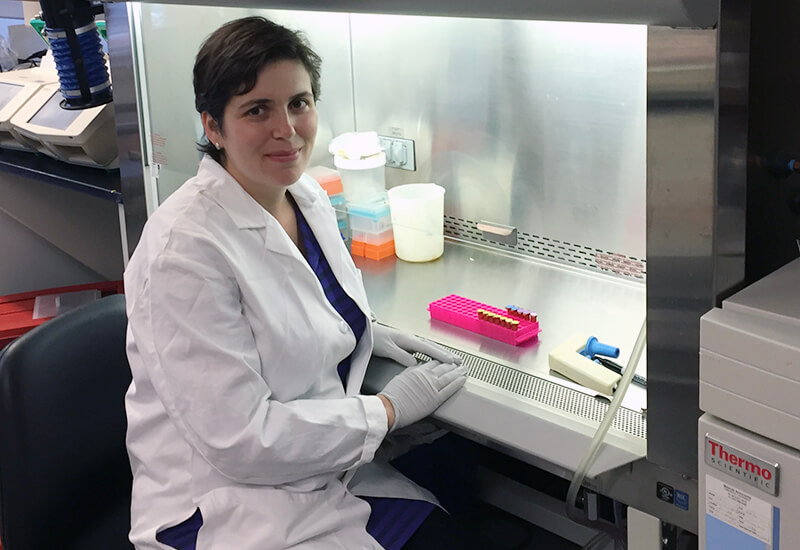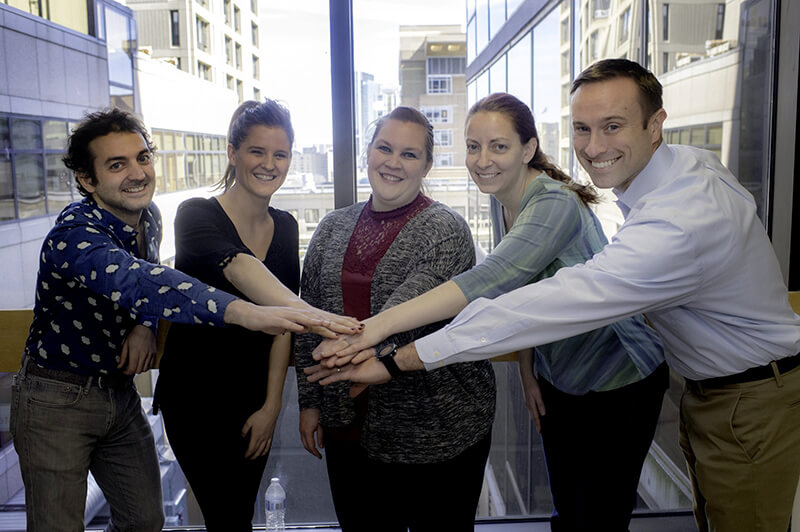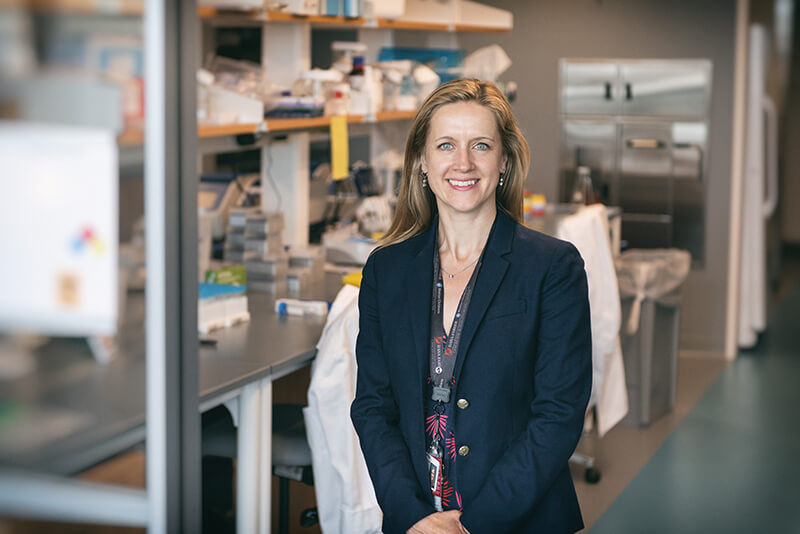In the wake of the COVID-19 pandemic, labs across the world have been in lockdown, while researchers eagerly prepare to return to work when it is safe to do so. Three cancer researchers at Dana-Farber/Boston Children’s Cancer and Blood Disorders Center share some of the experiences and challenges they’ve faced during COVID-19, as well as some unexpected gifts they’ve found along the way.
Yana Pikman, MD: The Pikman Lab
The Pikman Lab is focused on developing targeted therapies for leukemia.

When research activities were halted in mid-March, I was in the midst of opening up my own lab and moving into my lab space. My first hire, a research technician, started on April 6 with no lab to go to. I’ve been trying to hire other people for my team, but it’s been a challenge.
I work with leukemia cell lines, and also with primary patient samples. Some of the research studies have been paused and we haven’t been able to collect fresh samples for the study of leukemia. In addition, I work with mouse models, where we test novel treatment hypotheses — also on hold. So, in many ways, my research, which many patients rely on for new therapies, is in a holding pattern, but I’m looking forward to ramping up.
With travel paused, I’ve had more lengthy discussions with some of my mentors and collaborators. It has been easier to schedule time with people, and the conversations have been more in-depth. In some cases, these discussions made a big difference in the ideas and strategies surrounding my research, helping me to move forward, and plan future projects.
Brian Crompton, MD: The Crompton Lab
The Crompton Laboratory focuses on leveraging proteomic and genomic approaches to transform treatment approaches for pediatric solid tumor malignancies.

In my lab, we’re trying to translate patient-based tissue profiling into clinically-relevant tests, so we can have a better chance of curing them. With the lab closed, we haven’t been able to perform any new experiments. However, we were fortunate to have generated a lot of exciting data just before the lab shut down, and we’ve been focused on analyzing that data from our homes.
When we return to the lab, there will be a mad dash to get projects up and running, but there will still be restrictions on time at the bench and access to centralized resources will be limited. We will need to have realistic expectations as we try to accelerate our research progress.
During this time, we must also be committed to the next generation of scientists. For late-stage trainees, it may be many months before institutions start hiring, so what are we going to do for those individuals who should be transitioning to independent investigators? We need to protect the future of pediatric oncology research, so discoveries and cures aren’t lost to this pandemic. I am encouraged to hear many senior leaders in the cancer research field drawing attention to this issue, and I know we will find solutions to protect our trainees.
Although the pandemic presents a major hurdle for our research progress, it has unexpectedly enriched the relationship my wife and I have with our kids. We have been taking turns homeschooling our 7-year-old son and 5-year-old daughter. And we’ve been playing soccer with them almost every day. My son has got some serious moves, and my daughter suddenly understands how to set up a give-and-go — and she’s fearless like her mother.
This strange period in our lives has been the most priceless time I’ve ever had with my kids, the likes of which I’ll probably never have again.
Mariella G. Filbin, MD, PhD: The Filbin Lab
The Filbin Lab studies pediatric brain tumors, including high-grade gliomas, DIPG and malignant embryonal brain tumors.

Although my lab knew a shutdown was imminent, we didn’t anticipate how fast it was going to happen — and how long it would last. When we realized the shutdown was going to be months, we started thinking, how are we going to reorganize ourselves? What work can we do from home? We turned to data analysis — having serendipitously just finished terabytes of sequencing data on pediatric brain tumors before the lock-down.
Specifically, the female scientists in my lab who said they had always wanted to learn computational science and programming — but never had the time — took it upon themselves to learn it and take courses, and eventually began analyzing single-cell RNA sequencing data, which is very difficult to do.
One thing that was hard for us to digest was that we could no longer do our on-hand processing of fresh tumors from the operating room. Those samples are extremely precious as they come out of the patient, and we usually do the single cell dissociation and sequencing right away. Since that can’t happen, all of the samples have to be frozen, which diminishes the quality.
In addition, we have all these interesting findings from basic science that we now can’t translate into mouse modeling, which is required to move forward into clinical trials. There will be a backlog of experiments once we start up again.
Cancer still happens and there are still children dying from these conditions. We need to make sure these kids have a voice through us.
Amidst the challenges, there have also been silver linings. The first paper out of my lab was accepted by Cancer Cell. We were asked to provide cover art, so some of my lab members took the initiative to design different options. One is a watercolor. Even if they don’t accept any of them, I will frame them, because they will always remind me of the COVID-19 shut down, when my lab team turned into computer scientists and artists.
